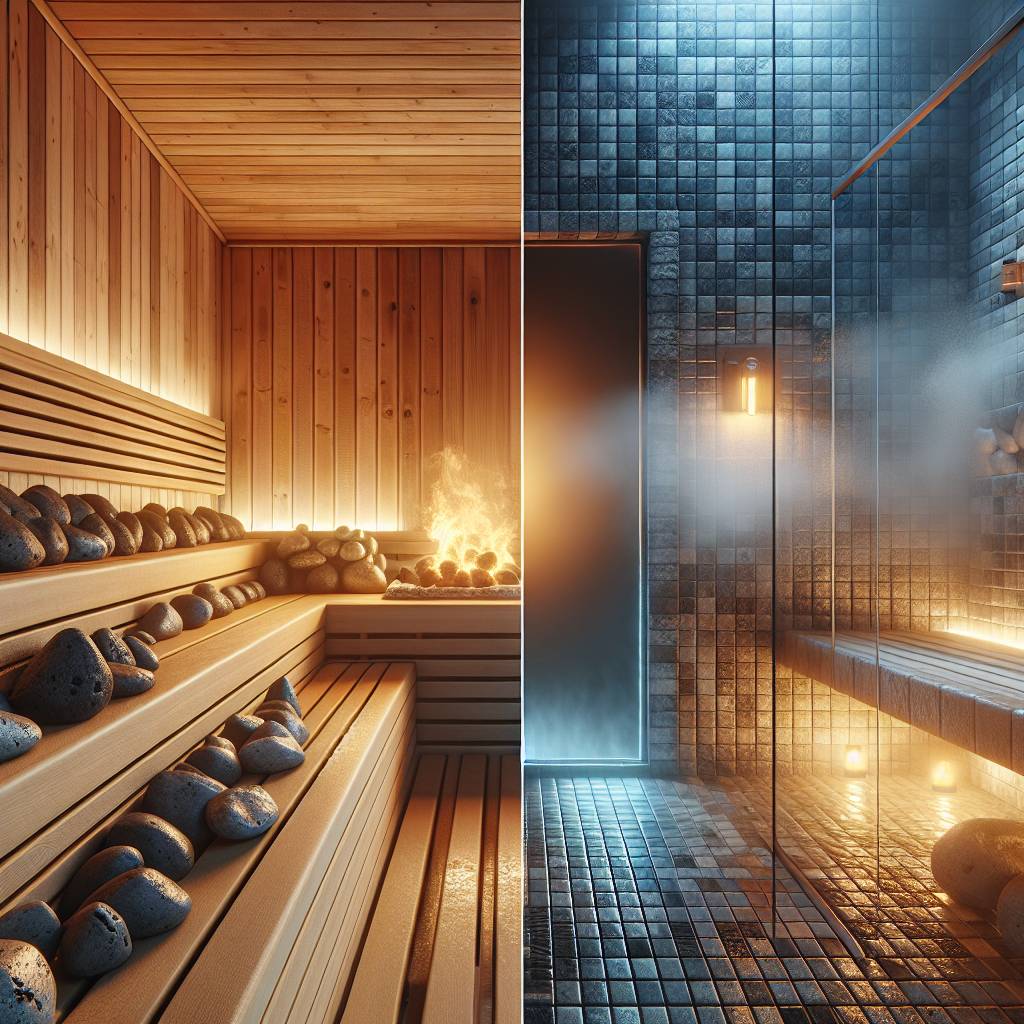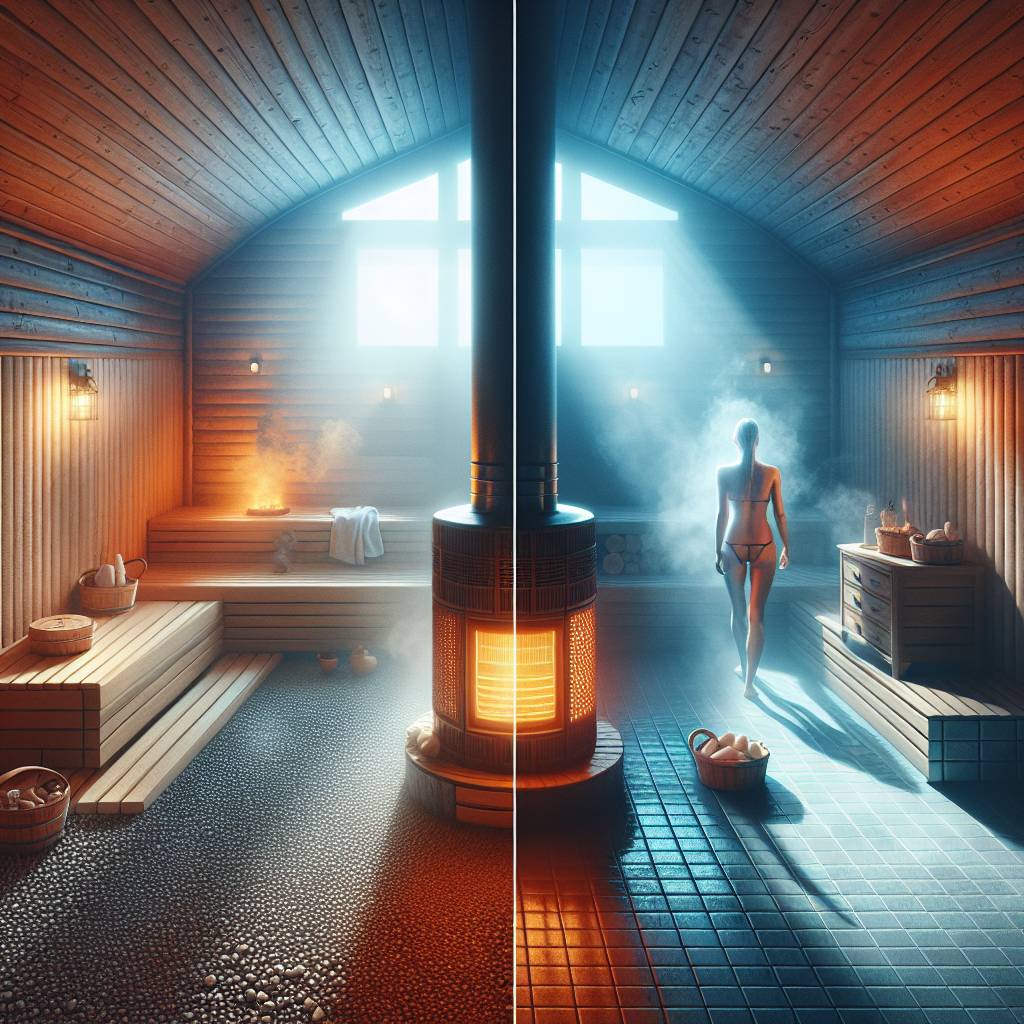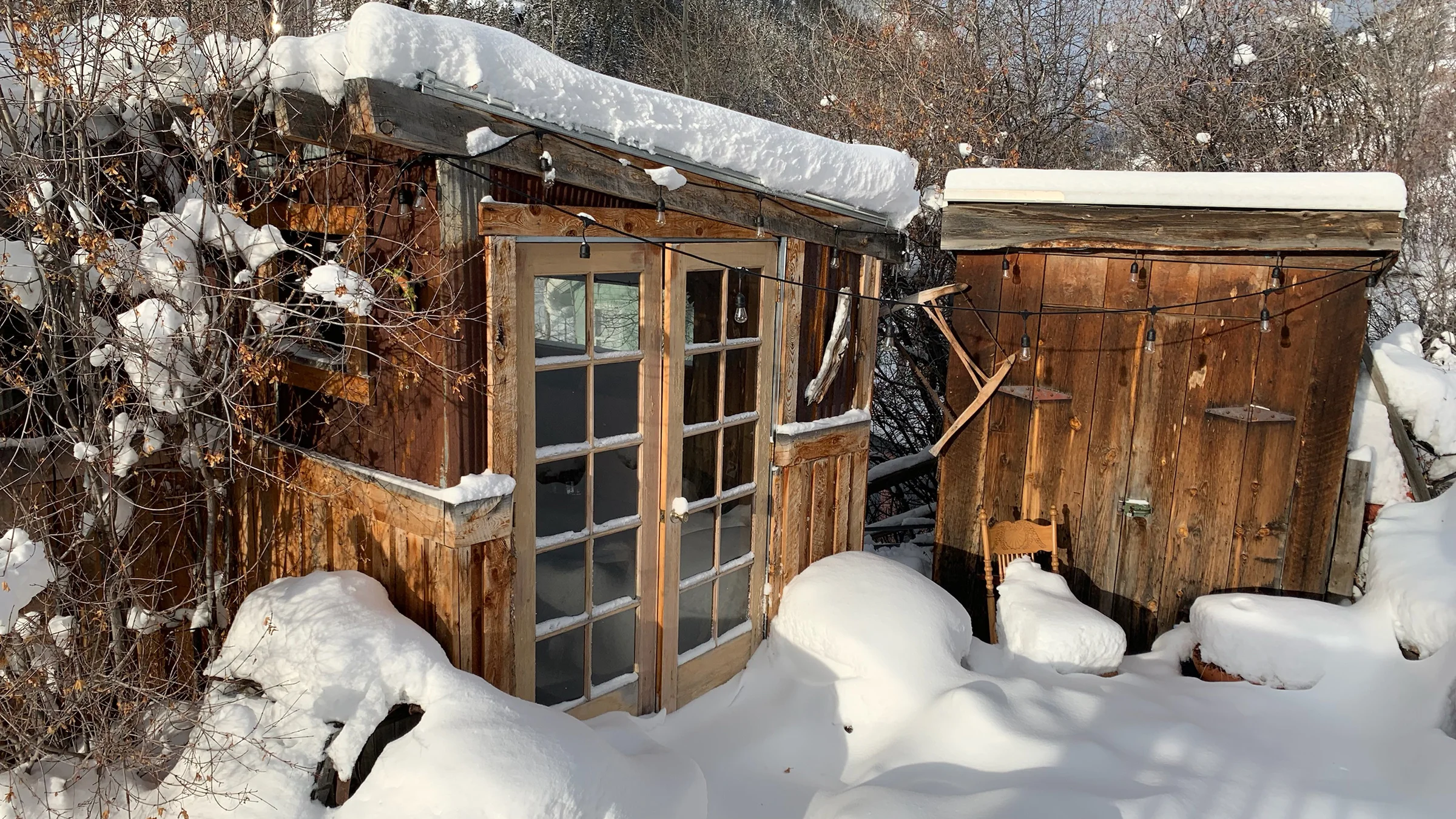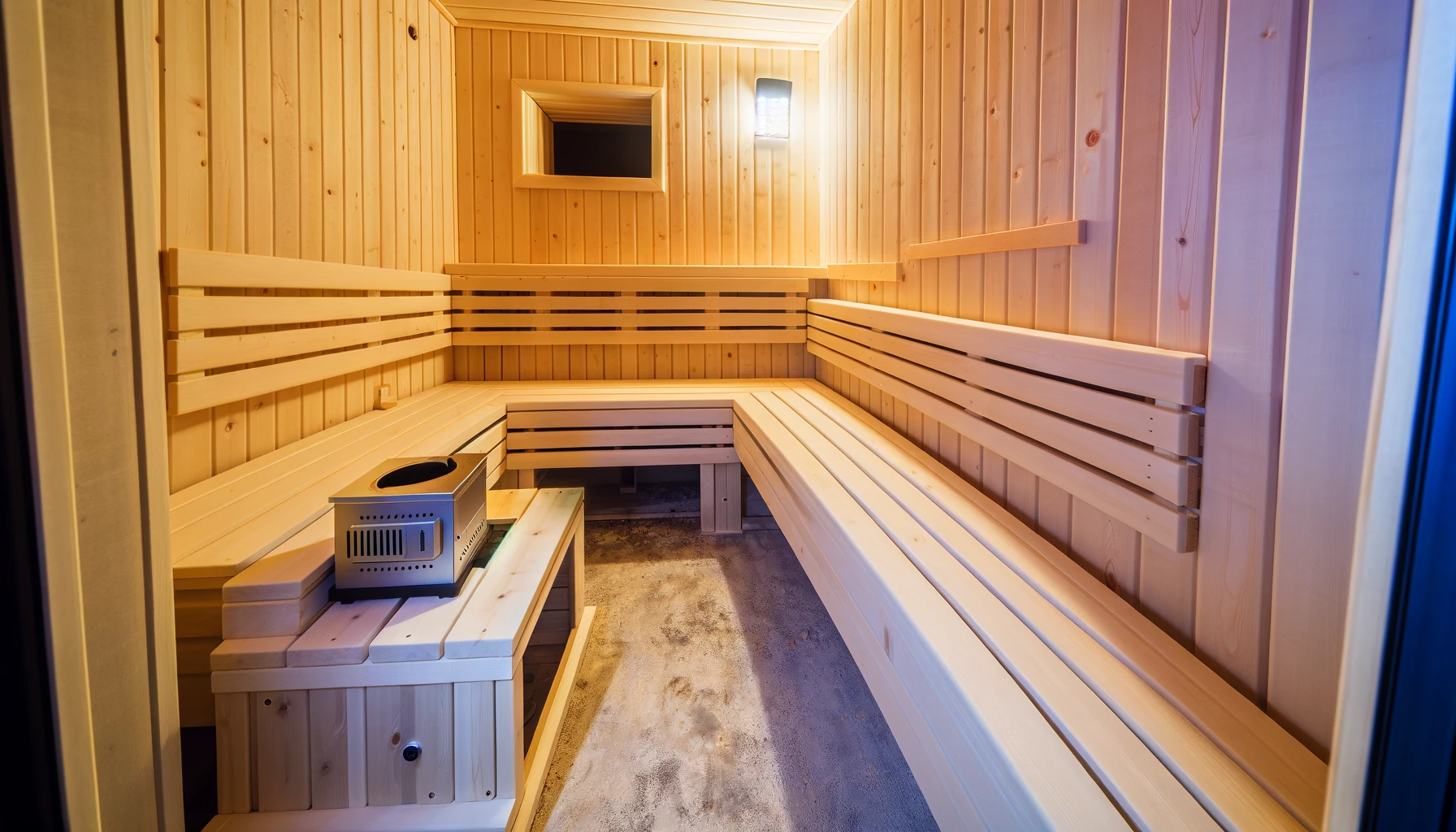Did you know that saunas have been used for thousands of years for their health benefits? Today, we’ll delve into the age-old tradition of Finnish saunas and compare them to the modern steam rooms gaining popularity. While traditional Finnish saunas offer a dry heat experience with water poured over hot stones, modern steam rooms provide a moist environment using steam generators. We will explore the differences in temperature, humidity levels, and overall therapeutic effects of these two relaxation havens, dry saunas and nordic saunas. Join us on this journey as we uncover the unique features and benefits of each, helping you decide which option best suits your wellness needs.
Key Takeaways
- Choose Based on Experience: Consider whether you prefer the dry heat of traditional Finnish saunas or the moist heat of modern steam rooms for a more enjoyable relaxation session.
- Prioritize Health Benefits: Evaluate the specific health benefits provided by each option, such as detoxification in saunas or respiratory benefits in steam rooms, to align with your wellness goals.
- Consider Installation and Maintenance: Factor in the ease of installation and maintenance requirements when deciding between a traditional Finnish sauna and a modern steam room to ensure long-term convenience.
- Assess Cost Effectiveness: Compare the initial costs and ongoing expenses associated with both sauna types to make an informed decision that fits your budget and lifestyle.
- Personalize Your Choice: Tailor your selection based on your preferences, health needs, and budget constraints to create a personalized wellness experience at home.
- Refer Back to Specific Comparisons: Recall the differences in heating methods, temperature variations, and unique health benefits discussed in the article to guide your decision-making process effectively.
Understanding Saunas and Steam Rooms
Types of Saunas
Traditional Finnish saunas focus on dry heat, typically using rocks to generate steam when water is poured over them. These saunas are renowned for their wooden interiors and high temperatures, ranging from 70-100 degrees Celsius. Finnish saunas are popular in gyms and spas for their relaxing and detoxifying effects.
The heating method in Finnish saunas involves a stove or heater that warms the room through convection heat. This process creates a circular flow of hot air, ensuring even distribution of heat throughout the sauna space.
How Steam Rooms Differ
Steam rooms, also known as steam saunas, offer a unique experience with their high humidity levels, typically around 100%. Unlike Finnish saunas, steam rooms operate at lower temperatures, usually between 40-50 degrees Celsius. The high humidity in steam rooms provides a moist environment, which can be beneficial for respiratory health.
The impact of high humidity in steam rooms enhances the user experience by promoting deep relaxation and aiding in skin hydration. The warm, moist air helps open up pores and cleanse the skin thoroughly, making it a popular choice for individuals seeking rejuvenation.
Key Features Comparison
Finnish saunas rely on dry heat produced by the stove or heater, while steam rooms use moist heat generated by boiling water. The contrast in heating mechanisms results in distinct sensations during sauna sessions.
Temperature-wise, Finnish saunas maintain higher heat levels compared to steam rooms. Finnish saunas have lower humidity levels, creating a dryer environment suitable for those who prefer intense heat experiences.
The differences in temperature and humidity levels between Finnish saunas and steam rooms significantly impact the overall sauna experience. Individuals looking for a more intense sweat-inducing session might opt for Finnish saunas, while those seeking gentler warmth and higher humidity levels may prefer steam rooms.
Dive into Traditional Finnish Saunas
History and Culture
Finnish saunas have deep historical roots, dating back thousands of years to ancient Nordic cultures. Saunas were initially used for cleansing rituals and spiritual ceremonies before evolving into a popular social activity.
Saunas hold immense cultural significance in Finnish society, serving as a place for relaxation, socializing, and rejuvenation. They are considered a cornerstone of Finnish identity, with nearly every household having a sauna.
The evolution from traditional saunas to modern steam rooms showcases the shift towards innovation in wellness practices. While traditional saunas focus on dry heat generated by wood stoves, steam rooms utilize humid heat produced by steam generators.
Design and Operation
Traditional Finnish saunas feature distinctive design elements such as wooden interiors, ventilated ceilings, and heated rocks for generating dry heat. The use of natural materials like wood contributes to the authentic sauna experience.
In contrast, steam rooms have a more modern design with tiled surfaces and built-in steam generators. The operational difference lies in the type of heat each generates; Finnish saunas produce dry heat, while steam rooms offer moist heat through steam.
The design of saunas directly impacts their functionality. Finnish saunas’ wooden interiors create a cozy ambiance conducive to relaxation, while steam rooms’ tiled surfaces are easier to clean and maintain in commercial settings.
Health Benefits
Using Finnish saunas provides various health benefits, including improved circulation, detoxification through sweating, and muscle relaxation. Regular sauna bathing has been linked to reduced stress levels and enhanced cardiovascular health.
Steam rooms offer unique health advantages such as opening up pores for deep cleansing and promoting respiratory health through inhalation of steam. The humid heat in steam rooms can help alleviate respiratory issues like congestion and allergies.
Sauna usage contributes significantly to overall well-being by promoting relaxation, stress relief, and improved sleep quality. The combination of physical and mental health benefits makes regular sauna sessions a valuable aspect of a holistic wellness routine.
Exploring Modern Steam Rooms
Technology and Innovation
Modern steam saunas have incorporated cutting-edge technology to enhance user experience and efficiency. These saunas feature state-of-the-art heating systems that ensure precise temperature control and even heat distribution. The advancements in modern saunas have led to the development of collapsible steam saunas, making them more accessible and convenient for users.
In contrast, traditional steam saunas rely on more simplistic heating methods such as wood stoves or electric heaters. While effective, these heating systems may lack the precision and efficiency of modern counterparts. Over time, innovations in heating systems for Finnish saunas have focused on improving energy efficiency and reducing heat-up times, providing users with a more seamless sauna experience.
The evolution of technology has significantly enhanced the sauna experience for users. From smart controls that allow remote operation to integrated sound systems for relaxation, modern steam rooms offer a multisensory experience that goes beyond basic functionality.
Health and Wellness Benefits
Regular use of modern steam rooms can have a profound impact on physical health. The heat generated in these saunas helps improve blood circulation, promote detoxification through sweating, and relieve muscle tension. Moreover, the mental wellness benefits of sauna sessions include stress reduction, improved sleep quality, and enhanced relaxation.
Incorporating saunas into a lifestyle can lead to overall wellness advantages. The combination of physical and mental benefits contributes to a holistic approach to well-being. Users often report feeling rejuvenated, refreshed, and invigorated after regular sauna sessions.
Design Trends
Current design trends in modern steam room construction focus on sleek, minimalist aesthetics combined with functional features. Glass walls, LED lighting, and natural materials are popular choices in contemporary Finnish saunas. These design elements create a tranquil and inviting ambiance for users to relax and unwind.
Popular design elements in modern steam rooms prioritize both aesthetics and functionality. Comfortable seating, ergonomic layouts, and customizable options cater to diverse user preferences. Design trends play a crucial role in influencing users’ choices when selecting a sauna, emphasizing the importance of creating a space that is both visually appealing and comfortable for relaxation.
Comparing Heating Methods
Dry Heat in Finnish Saunas
In Finnish saunas, convection heating is the primary method, utilizing a stove to heat rocks that radiate warmth. This creates a dry heat environment with low humidity levels. The lack of moisture in the air enhances the feeling of intense heat on the skin.
Low humidity levels in Finnish saunas can lead to rapid perspiration as the body works harder to cool down. This sweating process helps cleanse the skin and detoxify the body, promoting relaxation and overall well-being. However, prolonged exposure to dry heat may cause dehydration if users do not hydrate adequately.
Benefits:
- Intense heat promotes deep relaxation and stress relief.
- Efficient sweating aids in detoxification and skin cleansing.
Drawbacks:
- Potential risk of dehydration due to excessive sweating.
- Some individuals may find dry heat uncomfortable or too intense.
Humid Heat in Steam Rooms
Steam rooms, on the other hand, offer a sensation of convection heating combined with high humidity levels. The warm steam creates a moist environment that envelops users, leading to a different sensory experience compared to Finnish saunas.
High humidity in steam rooms can have a soothing effect on the respiratory system, helping to open up airways and promote easier breathing. The moist heat also benefits the skin by hydrating and moisturizing it, leaving it feeling refreshed and rejuvenated after a session.
Humid heat in steam rooms contrasts with the dry heat of Finnish saunas by providing a milder heat sensation that feels gentler on the skin. Users often find the humid environment more tolerable, especially for those who may struggle with the intensity of dry heat.
Differences:
- Steam rooms offer a moist heat environment compared to the dry heat of Finnish saunas.
- The high humidity levels in steam rooms provide respiratory benefits and skin hydration.
Temperature and Experience
Heat Levels
Finnish saunas typically operate at temperatures ranging from 70 to 100 degrees Celsius, while modern steam rooms maintain a lower temperature of around 40 to 50 degrees Celsius. The extreme temperatures in Finnish saunas can provide intense heat experiences, promoting sweating and relaxation. However, it is crucial to regulate these temperatures to prevent discomfort or overheating.
In contrast, steam rooms offer a lighter and more humid environment due to the lower temperatures and the presence of steam. This gentle heat allows users to enjoy a milder sauna experience compared to the intense dry heat of traditional Finnish saunas. It is essential for sauna operators to ensure that the heat levels are adjusted accordingly to cater to users’ preferences and comfort levels.
User Experience
The user experience in Finnish saunas and steam rooms varies significantly based on the type of heat generated. Finnish saunas offer a dry heat environment, which many people find invigorating and cleansing. On the other hand, steam rooms create a moist atmosphere that can be soothing and beneficial for respiratory health.
Factors such as air quality, lighting, and seating arrangements contribute to a positive sauna experience. Finnish saunas often feature wooden benches for users to relax on, while steam rooms may have tiled seating areas. Proper ventilation and adequate lighting are essential for creating a comfortable and safe sauna environment.
In both traditional Finnish saunas and modern steam rooms, user comfort and safety should be prioritized during sauna sessions. Proper ventilation, hygiene, and temperature regulation play key roles in ensuring a relaxing and enjoyable sauna experience for all users.
Health Benefits Side by Side
Finnish Sauna Advantages
Finnish saunas, deeply rooted in tradition, offer unique advantages compared to modern steam rooms. The dry heat of a Finnish sauna helps in detoxification by inducing sweating, cleansing the body from impurities. This traditional sauna type is renowned for promoting relaxation through its gentle warmth, creating a tranquil atmosphere. Regular use of Finnish saunas has been linked to various health benefits, including improved circulation and reduced stress levels. The high temperatures in Finnish saunas can help alleviate muscle tension and promote overall well-being.
Benefits of Finnish Saunas:
- Promotes detoxification
- Enhances relaxation
- Improves circulation and reduces stress levels
Steam Room Benefits
On the other hand, modern steam rooms offer specific benefits that cater to skin health and respiratory function. The moist heat in steam rooms helps open up pores, allowing for a deep cleanse that contributes to healthier skin. Steam rooms are also beneficial for individuals with respiratory issues as the warm, humid air can assist in clearing nasal passages and improving breathing. Furthermore, the therapeutic advantages of steam room sessions extend to promoting relaxation and relieving muscle soreness after intense workouts.
Advantages of Steam Rooms:
- Enhances skin health
- Improves respiratory function
- Promotes relaxation and relieves muscle soreness
Installation and Maintenance
Setting Up at Home
Setting up a Finnish sauna at home is relatively straightforward. Ensure a well-ventilated area, preferably near a water source for convenience. Install proper insulation to retain heat efficiently.
When installing a steam room in a residential setting, consider the space requirements. Steam rooms typically need more room due to the steam generator and ventilation equipment. Adequate waterproofing is crucial.
The key differences in space and equipment requirements for home saunas lie in the heating mechanism. Finnish saunas rely on heated rocks for dry heat, while steam rooms use a steam generator for moist heat.
Ongoing Care
Maintenance practices for Finnish saunas include regular cleaning of benches, floors, and walls to prevent mold growth. It’s essential to check the heater for any malfunctions and ensure proper ventilation.
For steam rooms, regular cleaning and upkeep are vital to prevent mold and mildew buildup. Wiping down surfaces after each use and periodic deep cleaning are necessary to maintain hygiene.
Regular care is crucial for both types of saunas to ensure longevity. This includes checking for leaks, maintaining proper humidity levels, and replacing any worn-out parts promptly.
Cost Analysis
Initial Expenses
Installing a Finnish sauna typically involves higher initial costs compared to a modern steam room. The traditional sauna requires materials like wood, stones, and insulation, adding to the setup expenses. In contrast, steam rooms often come pre-fabricated, reducing installation costs significantly.
When considering a Finnish sauna, budgeting for sauna equipment is crucial. This includes the heater, benches, lighting, and other accessories. These components contribute to the overall cost of creating an authentic sauna experience at home.
Setting up a sauna at home can incur various expenses beyond just the construction itself. Additional costs may include ventilation systems, flooring upgrades for heat resistance, and any necessary electrical work. These factors should be factored into the initial budget planning.
Long-Term Costs
Maintaining a Finnish sauna over time involves ongoing expenses for upkeep and repairs. Regular maintenance tasks such as cleaning, replacing stones in the heater, and monitoring humidity levels are essential to ensure the sauna’s longevity.
Owning and operating a steam room also comes with financial implications. Energy consumption for generating steam, routine servicing of steam generators, and periodic checks on the room’s structural integrity contribute to long-term costs.
Sauna owners should consider cost factors for sustainable usage in the long run. Factors such as energy efficiency upgrades, water usage for steam generation, and potential repairs or replacements of components should be part of the financial planning for maintaining the sauna’s functionality.
Making the Right Choice
Personal Wellness Goals
Saunas and steam rooms can be integral to achieving personal wellness goals such as relaxation and fitness. The intense heat in saunas aids in muscle recovery and stress relief, promoting overall well-being. Regular sauna sessions have been linked to improved cardiovascular health and better skin condition.
Considering your wellness objectives is crucial when deciding between a traditional Finnish sauna or a modern steam room. Saunas are ideal for those seeking deep relaxation and detoxification, while steam rooms are preferred for their humid environment, beneficial for respiratory health. Setting clear wellness targets will help you choose the option that best aligns with your needs.
- Saunas promote muscle recovery
- Steam rooms benefit respiratory health
- Wellness targets aid in selecting the right option
Space and Budget Considerations
When it comes to space requirements, traditional Finnish saunas generally need more room than modern steam rooms due to their construction. Saunas typically require a dedicated space with proper ventilation, while steam rooms can be more compact and easier to install. Considering available space is essential for a seamless integration into your home.
Budget considerations play a significant role in choosing between a sauna and a steam room. Traditional saunas may have higher upfront costs due to construction materials and installation, whereas steam rooms are often more cost-effective. Balancing your space limitations with financial constraints is key to making the right choice for your home spa.
- Saunas need more space than steam rooms
- Steam rooms are more cost-effective
- Balancing space and budget is crucial for decision-making
Final Remarks
In weighing the benefits, costs, and experiences of traditional Finnish saunas against modern steam rooms, you have gained a comprehensive understanding of these relaxation havens. Your health, relaxation, and financial considerations play crucial roles in making the right choice for your well-being. Remember to prioritize what matters most to you – whether it’s the dry heat of a sauna or the moist warmth of a steam room. Consider your preferences, health needs, and budget when deciding which option aligns best with your lifestyle. Your journey to wellness and relaxation starts with choosing the sauna or steam room that resonates most with you.
Frequently Asked Questions
What are the key differences between traditional Finnish saunas and modern steam rooms?
Traditional Finnish saunas use dry heat from a stove and rocks, while modern steam rooms produce moist heat using steam generators. Finnish saunas have lower humidity levels and higher temperatures compared to steam rooms.
Which heating methods are used in traditional Finnish saunas and modern steam rooms?
Traditional Finnish saunas typically use wood stoves or electric heaters to heat the sauna room, whereas modern steam rooms rely on steam generators to produce steam for a humid environment.
What are the health benefits of traditional Finnish saunas compared to modern steam rooms?
Traditional Finnish saunas offer benefits such as improved circulation, relaxation, and detoxification through dry heat therapy. Modern steam rooms provide benefits like respiratory relief, skin hydration, and stress reduction through moist heat therapy.
How do the installation and maintenance requirements differ between traditional Finnish saunas and modern steam rooms?
Installing a traditional Finnish sauna may involve more complex construction due to ventilation needs and the stove setup. Modern steam rooms are often easier to install but require regular cleaning of the steam generator and maintenance of humidity levels.
Which factors should be considered when deciding between a traditional Finnish sauna and a modern steam room?
Consider factors like preferred heat type (dry vs. moist), health benefits desired, installation space available, upfront costs, ongoing maintenance requirements, and personal preferences for temperature and humidity levels when choosing between a sauna or a steam room.






